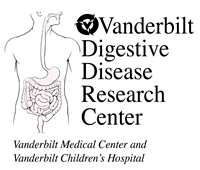P/F applications should be focused proposals, the aims of which can be clearly accomplished within one year of funding. The extent to which Research Core laboratories of the DDRC are utilized should be emphasized in the proposal. DDRC funding is limited to one year of support at approximately $40,000 for the 2024 cycle. Recipients who are productive on their projects may apply for a second year of funding through a competitive renewal. Exceptional applicants with a high likelihood for progression to extramural funding and a successful career in investigative gastroenterology are eligible to be named DDRC Young Investigator. The Young Investigator will be awarded $25,000 annual salary support for a 12 month period. The applicant should have at least 80% of their time protected for research. There is a 5-page limit for the body of the application (Specific Aims, Background/Significance, Preliminary Studies, Experimental Design and Methods).
For additional information contact Maria Eckhardt
*Forms available on-line: http://grants.nih.gov/grants/funding/phs398/phs398.html
Please send a pdf copy of the application to Maria Eckhardt.
Application Requirements
The applications must contain the following, in order:
VDDRC Pilot and Feasibility Program Face Sheet.
NIH PHS 398 Page 2 (Description, Performance Sites, and Key Personnel)
NIH PHS 398 Page 4 (Detailed budget for the one year budget period )
The Pilot and Feasibility Program Projects should utilize VDDRC Research Core laboratories. Specific plans to use the cores on a fee-for-service basis should be included in the budget, where applicable. In general however, Core charges for new investigator P/F applications will be waived.
Identify any sources of funds currently available to support research on this or closely related topics by the applicant and/or senior investigator with whom the applicant is associated. If funds exist clearly indicate why VDDRC Pilot and Feasibility Program funds are being requested. Duplication of funds will not be permitted.
4. Body of Application (maximum of 5 pages for items a-d)
- Specific Aims (1/2 page: Remember this is a one year pilot project)
- Background and Significance (1-2 pages: Include a thorough, but concise description of the work leading to your current hypothesis review of the literature)
- Preliminary studies (1 page: You are not required to have preliminary data since this is a pilot project. Briefly describe relevant preliminary work that you have done supporting this application)
- Research Design and Methods (1-3 pages of study design, methodology, data analysis and any problems anticipated and potential solutions. Include rationale for experimental design and reasons for favoring one methodology over another. Describe how you will analyze data; identify potential problems and solutions.)
5. Literature cited. Provide full details of literature cited including full title and authors.
6. Brief description of long-term goals of the research project you plan to develop. Include rationale for the planned research program based on past experience of the applicant. What are the plans for future funding if the line of investigation is successful? Describe how the project relates to one of the themes of the DDRC:
- Gastrointestinal Infections and Injury
- Progenitor Cells, Development, Regeneration, and Pre-malignant lesions
- Obesity, Metabolism, and Nutrition
7. Brief description of the use of DDRC research cores:
- Mass Spectrometry/Proteomics Core
- Cell Imaging Core
- Flow Cytometry Core
- Preclinical Models of Digestive Disease (comprised of the tissue morphology subcore, GI organoids subcore and the preclinical imaging subcore
- Biostatistics Compenent
8. Biosketch (NIH format)
9. Appendix materials
10. Approvals for use of Human Subjects or Vertebrate Animals.
Signature and Recommendations
Applications require the signature of the chair of the applicant’s department or division director on the VDDRC P/F Program Face Sheet. This signature confirms that all physician-scientists who are Principal Investigators will have protected time to perform research. If the applicant is the VDDRC Young Investigator the requirement is 80% protected time.
Applications for the VDDRC Young Investigator Applicants require three letters of recommendation; one should be from the Division Director and one from the Department Chairman documenting laboratory space and protected time commitment (80%).
Trainees in their last year of fellowship who are recipients of an NRSA individual award (F32) or an institutional training grant (T32) are eligible for P/F funds if they have had at least two years of research experience, and have suitable expertise and independence to carry out the planned experiments. Trainee applicant must have a letter of commitment from a senior scientist to sponsor the project.
Applicants who have completed training within one year and remain affiliated with a mentor must have a letter stating the independence of the applicant.
